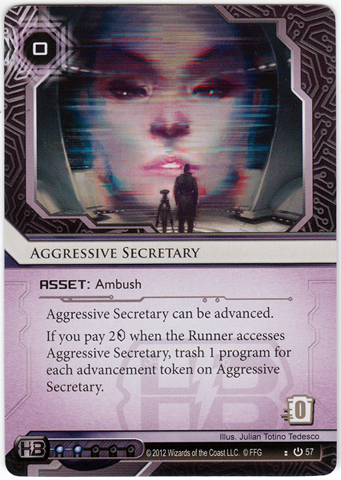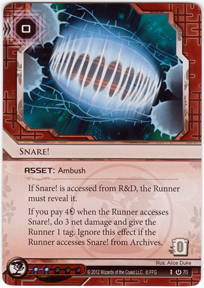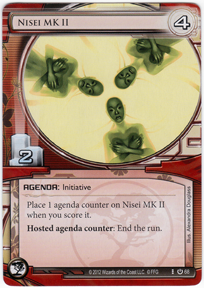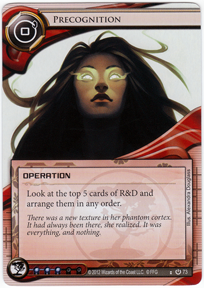We need to talk about the Crush: A Candy Crush Saga Review
by: Jason Waddell
My untested mental image of obscenely popular freemium Facebook games is intrinsically linked with the consumer exploitation: addictive systems with restrictive content access mechanics and a pay-to-progress business model. Creating an addicting progressed-based experience is relatively trivial in the gaming world. Even the game Cookie Clicker, whose sole mechanics include clicking on a digital cookie and purchasing items, has managed to get its addictive hooks into even the savviest of gamers, but is thankfully truly free to play.
Not so with Candy Crush Saga. Countless ink has already been spilled on the supposed evils of Candy Crush and its infamous Facebook predecessor, Farmville. Like its predecessor, I had been content to ignore Candy Crush Saga entirely. That is, until a coworker with respectable taste in games recommended it to me. We’ve played games like Set, Hive and Starcraft II together, and he’s far too busy to make time in his life for shallow time-wasting fluff.
With my curiosity piqued, I decided to discover first-hand what all the hype was about.
Gameplay
Match-three style games have never been my forte. I first discovered Bejeweled as a way to pass the time in a high-school computer science course, but found the gameplay rather shallow and unsatisfying. I’ll stick to Tetris on the TI-83, thank you very much. Years later I gave the genre another look based on Penny-Arcade’s Puzzle Quest recommendation, but even with a layer of RPG mechanics slapped on top, the gameplay soon became repetitive and tedious.
Candy Crush’s gameplay surpasses both of these.
Firstly, Candy Crush is surprisingly tactical. Rather than simply reward the player with extra points for combining four or more candies together, the combined candies leave behind one of four different special candies based on how the original candies were combined (a horizontally striped candy, a vertically striped candy, a wrapped candy or a color bomb).

When removed from the board, each of these special candies unleashes a unique but precise pattern of destruction on the board. Further, combining two special candies causes a devastating display. Progressing in Candy Crush requires skillfully and tactically setting up special candy effects to achieve each stage’s objective.
Secondly, with few exceptions, Candy Crush levels are restricted in the number of moves that they allot to the player, as opposed to a time-based restriction like the ones used in Bejeweled. This change fundamentally overhauls the experience. Bejeweled was a test of how well I could maintain my peripheral vision over the board while frantically executing matches. Candy Crush allows me to lay in bed and mentally mull over each move and its consequences at a relaxed pace.
Combined with the tactical play and we have the formula for an extremely satisfying experience. Although the game is wrapped from head-to-toe with colorful child-friendly graphics, the underlying gameplay engine is exceptionally skill-testing. Going deep into the tank to find a sequence of plays that completes the stage before your supply of moves runs dry can be a genuine rush, and taps into the same emotional feedback that hallmarks the best board games and card games.

Lastly, in addition to the core special candy mechanics, the game designers at King have packed the levels with interesting mechanics and obstacles: bombs that will end the level if not cleared within a certain number of moves, squares that must be unlocked by making matches in adjacent spaces, restrictive chocolate that slowly spreads over the level like Zerg creep, and so on. Beyond adding difficulty, these mechanics serve to keep the gameplay fresh and force the player to prioritize their actions differently from stage to stage.
As far as pure gameplay goes, Candy Crush passes with flying colors. I’ve never considered myself a fan of the genre, but the game’s designers have packed Candy Crush with innovative and intelligently designed systems that can keep even the most hardcore gamer satisfied. Of course, the age of evaluating games purely by their gameplay is rapidly disappearing. Free-to-pay games, however fun, are intrinsically linked to their monetization models.
Monetization
On the surface, Candy Crush is well and truly free to play. There is no download cost, and so thus far it has been fully possible to progress through the game without ever paying a cent. In two-weeks I have beaten 160 levels without once paying money to beat a stage. But that doesn’t mean that people aren’t paying. According to a ThinkGaming analysis, at the time of writing, Candy Crush is hauling in an estimated $850,000 in revenue per day. Regardless of the precision of that estimate, it seems apparent that consumers are paying in droves to get their fix.
The game itself is constantly poking and prodding the player to spend money. Let’s count the ways.
0) Difficulty Spikes (and luck-based levels)
Although not strictly a monetization scheme, Candy Crush’s inconsistent difficulty curve is the bedrock that enables all of the other methods. Every handful of levels the player will face a stage that is considerably harder than the ones that precede or follow it. This is obviously devious but also a little clever from the psychological perspective. Candy Crush is generally fun, and after a really hard level the player is rewarded with a series of entertaining and satisfying levels. Several times I have been stuck on a level for a dozen attempts, finally beaten it, then proceeded to clear the following five levels without losing a single life.
If the game only got harder, players would give once the game’s difficulty surpassed their skill level. But with these difficulty spikes, the promise of fun is always just one level away. Perhaps, in a bout of frustration, you’ll plop down some cash to increase your odds of progressing past this level. And if you do, you may even feel good about it. Look at all these fun levels you get to play now! This pattern is baked into the level progression, and soon enough it becomes readily apparent which ones are the “hard ones” and which are not. That’s fine, but my biggest gripe comes with the fact that progressing past some levels has very little to do with skill and a lot to do with luck.

Some levels, like the level above, have restricted board space, and offer the player little in the way of meaningful choices. Here we see the starting configuration for a level that only has one possible move, occurring in an irrelevant corner of the board. On this level, often my first dozen or so moves offered no real choices, and winning required getting a fortune opening from the Random Number Generator.
Make no mistake, there was still skill involved eventually, but whether the level was even viable or not felt like taking pulls from a slot machine. Eventually you will get lucky, but the grind can feel pointless and frustrating.
1) Limited number of lives
The player is given a maximum of five lives. Every time you lose a level you lose a life, and lives are gained naturally every 30 minutes. If you’ve been away for at least two and a half hours, you’ll come back to a full set of lives. Personally, I like this mechanic because it forces me to make the most out of each level attempt and places some weight, however trivial, on the gameplay. Aside from rogue-likes, single-player games often struggle to create meaningful failure states, as you can often just reload from the last checkpoint and have another go. Restricting my number of allowed attempts forces me to take things more seriously, and makes the victories seem somehow more meaningful.
Secondly, it provides a natural limit that tells me to stop playing and go do something else. I will never pay for lives, and certainly don’t want to spend all day crushing candy. Running out of lives provides the gentle push to get off my rear and do something worthwhile with my time.
For those who don’t want to wait, however…

2) Limited number of moves
Although each level technically has a fixed move limit, the limit can be negotiated at any time by greasing some palms. As soon as you start to run low on moves, Candy Crush will pop up the following gentle reminder in the corner of the screen:

Perhaps the most impressive part is just how well calibrated Candy Crush’s levels are. I can’t count the number of times I’ve lost a stage when sitting one move away from victory. Even more devious is the fact that, on stages where extra moves can be purchased, the screen will hover for a full second on the board after defeat to let the player see just how close they were. “Two more moves and I can get there!”. For losses where moves can’t be purchased, such as losing to a bomb detonating, the player is immediately whisked away to the defeat screen.
3) Extra Items
Stuck in a jam that extra moves won’t fix? Visit the Yeti Shop at any time to buy your way out of it.

4) Crossing Bridges
After every fifteen levels or so, you will encounter a bridge that restricts further access to the game. To cross it, you can either pay 3 Facebook credits ($0.30 total), or pester friends until three of them give you a ticket to cross.

This is the only monetization scheme I have supported. I don’t mind paying for content, and certainly don’t want to pester friends and relatives and panhandling for dimes. Mobile users have the additional option of completing special challenge stages to cross the bridges in lieu of payment. Thus far I have crossed about ten bridges, racking up a $3.00 tab. This feels like a reasonable rate to me, and the transaction doesn’t compromise the integrity of the skill-based gameplay.
The Geometry Wars Effect
If you play Candy Crush on Facebook, you’ll soon discover that you’re not the only one. Your aunt from New York? The loser who always tried to copy your Chemistry homework in high school? You’re old flames? They’re all on there, and the game constantly checks in to show you how you rank against your friends on each level and in the game as a whole. Chemistry cheater made it to level 120? You can beat that moron. Well, maybe. If you could just get past level 79. Maybe you could use a Lollipop Hammer after all..
Best of all, there’s no way to tell if your Facebook friends shelled out cash to beat the preceding levels. You may have your suspicions about the homework hustler, but Candy Crush doesn’t kiss and tell. So if you decide to Paypal your way through the next stage, your friends will be none-the-wiser.
Conclusion
Candy Crush Saga is a highly polished product with legitimate gameplay merit that is coated and dripping with monetization hooks. The game is as free as you want it to be, so long as you possess the discipline and emotional fortitude to resist its addictive elements and block out the pay-to-win temptations. If you don’t have those qualities, consider Gizmodo writer Ashley Feinberg’s story of spending $236 on Candy Crush in one month to be a cautionary tale.
Discuss this article in our forums.



























